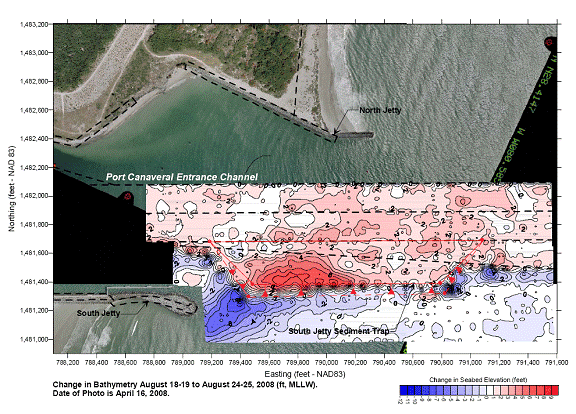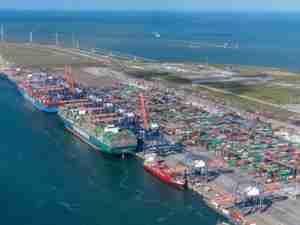Construction of the sediment trap, the only one in the state specifically designed to catch sand to prevent shoaling impacts rather than for sand bypass projects, was completed last year before the start of hurricane season. The Canaveral Port Authority Board of Commissioners approved the project in the aftermath of the 2004 hurricane season in which shoaling from the impacts of Hurricanes Frances and Jeanne twice shut down the Canaveral channel.
“The sediment trap was a wise investment by the Port Commissioners,” says Stan Payne, CEO of Port Canaveral. “Along with the backup generators now operational in all Port facilities, we have added an invaluable layer of protection for the continuation of our cruise and cargo operations during the annual storm season.”
Some 57,000 cubic yards of material moved from Tropical Storm Fay was contained within the confinement of the sediment trap. The trap received nearly double the amount of sand from this event than would accumulate in a year in the absence of a major storm. Annually, it is estimated naturally to accumulate 30,000 cubic yards.
“We dug a big hole hoping sand would fall into the hole instead of our channel and that’s exactly what happened,” says Dr. Kevin Bodge, who designed the sediment trap. “As a result, we were able to keep the channel open to commerce.”
The sediment trap is located just to the east of the South Jetty south of the main channel at Port Canaveral.











